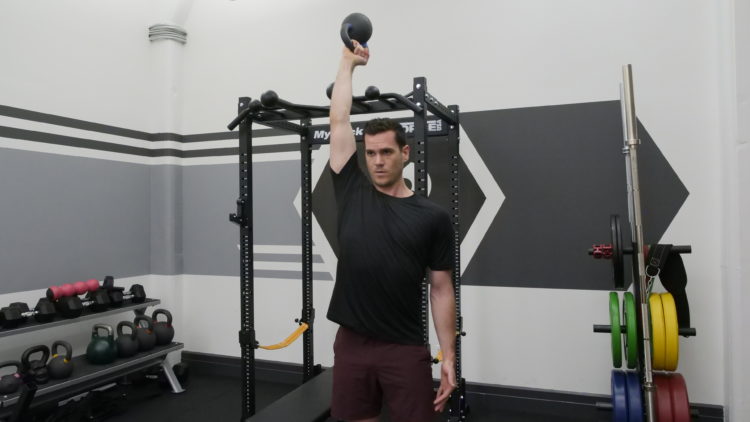What if I told you there’s a method that makes you stronger while also improving your technique and preventing injury. Would you believe me?
Let me introduce you to the concept of muscle irradiation.
Irradiation comes from Sherrington’s Law of Irradiation which states:
A muscle working hard recruits the neighboring muscles, and if they are already part of the action, it amplifies their strength.The neural impulses emitted by the contracting muscle reach other muscles and ‘turn them on’ as an electric current starts a motor.
If you’re still not convinced, stand up and try this simple test.
- Squeeze your glutes together as hard as you can
- Then clench both your fists together as hard as you can, digging your fingernails into your palms.
Can you feel it?
What you’d notice is an increased isometric contraction in your glutes. This is Sherrington’s Law in action.
Now let’s put this to good use to help you lift stronger with improved technique.
1. Unilateral presses and rows
Clenching your non-working hand into a fist (as described above) will send a signal to your working hand to grip harder, providing more stability in the wrist, forearms and shoulder area. And hopefully for more weight or reps.(1)
If you’re doing a standing unilateral press or pull, engaging your glutes will put your spine in neutral, helping you avoid extending the low back, particularly on single arm presses.
So, again: squeeze your glutes and fists during standing presses and pulls..
[Try these bottoms-up kettlebell variations that force you to grip as hard as you can!]
2. Engaging the lats for deadlifts and back squats
How often have you seen a lifter turn a heavy barbell back squat into a good morning? One reason for this is they’re NOT using their lats properly.
When you pull the bar down into your upper back/traps (depending if you’re a low or high bar squatter) you’re activating the lats, which provides the stiffness required to keep your spine in neutral and not ‘pitch forward’ while ascending from the hole.
And using the lats in the deadlift is a no brainer. By ‘squeezing your armpits’ together during the set up and lift, which keeps the bar close to you and the spine in neutral during the pull. (See the video above for a step-by-step explainer of this process.)
Engaging the lats ensures a straight and efficient bar path for both exercises, making it safer for you and your spine.
3. Active feet for better deadlifting and squatting
Rooting your feet to the ground (as described in the video) means you’re creating an arch, which when done correctly, is felt all the way up to your glutes.
And when you have this active foot position, your ankles, knees and hips should all start in a straight line.
Maintaining this arch while performing the squat or deadlift helps keep your ankles, knees and hips in proper alignment which puts you in a stronger position (and better posture) to make the lift.
A simple cue is to grip the floor with your toes while pulling them out to the sides as though you’re trying to tear, between your feet, a piece of paper you’re standing on.
[Related: 2 exercises for keeping your feet active when you lift]
4. Active hands and feet for bench pressing
Gripping the bar hard (or ripping the barbell in two) sends a signal to you’re ready to press some heavy weight. And this irradiation helps tightens your upper body which creates a torque on the bar and screws your upper back and shoulders into a better position to press.
But don’t stop with your hands. Involve your feet in your bench press as well.
Pushing yourself back with your feet (or digging them into the ground) during the concentric part of the press will engage the glutes, helps put an arch in the lower back and acts as a counterbalance to the weight above you.
Gripping the bar hard and digging in your feet helps ‘turn on’ the muscles of the chest, shoulders and arms to press the weight with better form and for more weight and reps.
[Related: What we mean when we say “bend the bar” during the bench press]
Wrapping Up
By actively recruiting muscles that are not directly involved with the lift will help you get stronger and lift with better and safer technique.
All you have to do is give your muscles a little squeeze.
Reference
- Abreu R, et al. Force irradiation effects during upper limb diagonal exercises on contralateral muscle activation. J Electromyogr Kinesiol. 2015 Apr;25(2):292-7.
Frequently Asked Questions
What is muscle irradiation?
Muscle irradiation is a technique used when lifting weights. It’s a means to create tension throughout the body, helping to engage more muscles. An example includes squeezing the fists, glutes, and core as hard as possible during a standing overhead press, or squeezing the lats and gripping the floor with your feet during squats.
